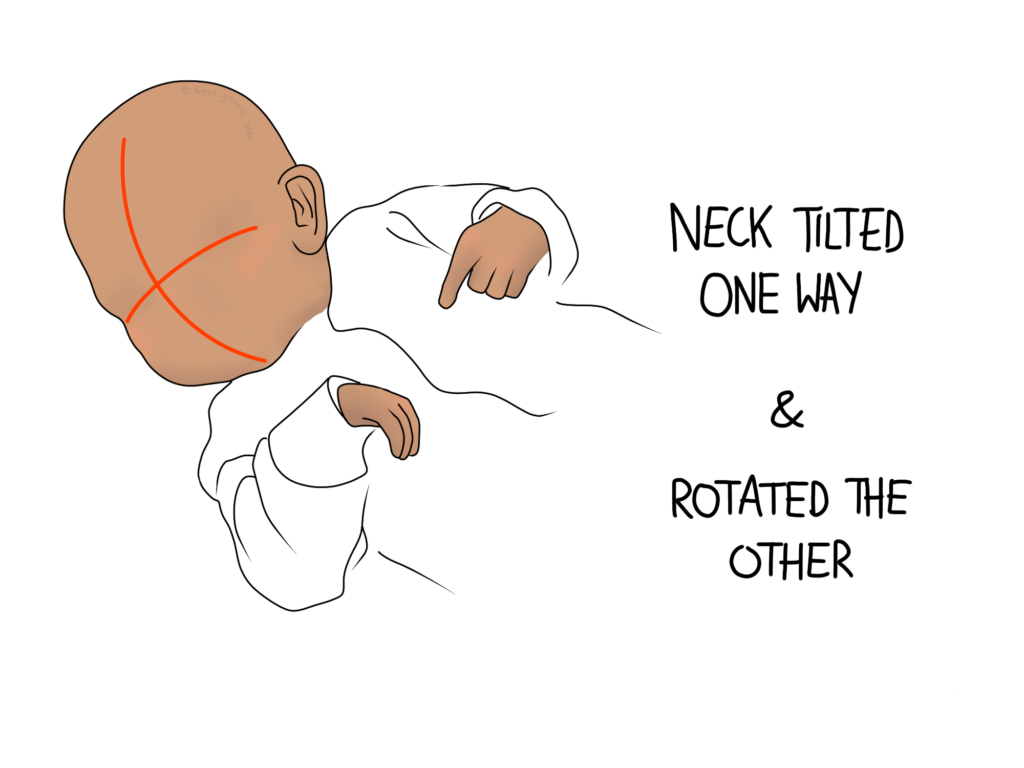Some babies begin to show signs of favouring one side at a few weeks old. This can be subtle at first, especially when their movement is limited and muscles are still very underdeveloped. You might find that when your baby is placed in a rocker or flat on their back, that they much prefer to turn their neck one way rather than the other. Test their ability to look the other way by bouncing a toy in their line of sight, leading them to the other side. If the movement is limited, and especially if you can see a muscle raising on the front of the neck, it might be time for some help.

Torticollis, also known as “wry neck”, is a condition in which a tight muscle limits neck movement. You may have felt it yourself, if you’ve ever slept awkwardly and woken up with a cricked neck. In adults, this will probably ease over a day or two, but for babies with already limited neck control, it can be hard to get past. A potential complication of torticollis in babies is a tendency to keep the neck in the same position. Before baby is able to sit without much support, this means continued pressure on one point in the head, which can lead to the development of a flat spot (plagiocephaly).
Causes of Torticollis
In most cases, there is no clear cause for a baby to develop torticollis. There are theories that positioning in the womb could cause tension that develops into the condition. Or that the pressures of birth can encourage its development. In some cases, there is swelling in the muscle, or another cause for the restriction in the neck. Your osteopath will examine thoroughly to identify the most likely cause.
Not all cases would be preventable, but reducing time spent with the head resting on a surface is helpful. Tummy time, for example, helps to strengthen and mobilise the neck. By preventing pressure on the head, it also helps to protect against the development of plagiocephaly. Although this pressure can be minimised, it cannot be completely eliminated- current guidance is to put babies to bed flat on their back for safe sleep. Once they become more mobile, they can move themselves into other positions, but torticollis and plagiocephaly are usually issues for babies too young to move around much.
Manging Torticollis
Osteopaths spend all day working with muscles, and for most cases of infant torticollis, it’s a simple muscular issue. Beverley uses very gentle techniques when treating babies. You can expect a treatment plan that includes gentle massage and stretching, as well as mobilising techniques to ensure the associated joints are moving well too. It may be appropriate to work down into your baby’s shoulders and upper back too. Keeping these muscles and joints happy should help to keep your baby’s neck comfortable, especially in the period before they can roll or sit, at which point their mobility will reduce the impact of neck tension.
Exercises are as important for paediatric patients as they are for adults. You may be asked to increase tummy time, change the “containers” you sit your baby in, and encourage head movement using toys and other interesting items.
Click here to make an appointment with Beverley for your baby’s torticollis
